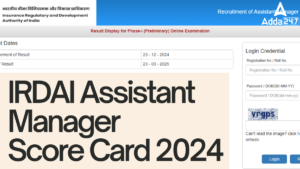Reasoning ability Quiz For LIC AAO 2019
Life Insurance Cooperation has released the notification for the posts of AAO for the Recruitment in 2019-20. This is a great opportunity for all those who aspire to become a Banker this year. Now the next step is to start practicing for the exams from now itself. Here is a quiz on Reasoning ability being provided by Adda247 to let you practice the best of latest pattern Reasoning ability Questions for LIC AAO 2019-20.
Directions (1-5): In the following questions the symbols &, *, #, @, % are used with the following meanings.
'A % B' means 'A is neither smaller nor greater than B'
'A & B' means 'A is neither smaller than nor equal to B'
'A @ B' means 'A is not greater than B'
'A # B' means 'A is not smaller B'
'A * B' means 'A is neither greater than nor equal to B'
These statements are followed by two conclusions:
Give answer as:
Q1.
Statements:
X # G % H; G & J # L; J # K * Y
Conclusions
I. X & L
II. K * G
if only conclusion I follows.
if only conclusion II follows.
if either conclusion I or II follows.
if neither conclusion I nor II follows.
if both conclusions I and II follow.
Solution:
I. X > L (True) II. K < G (True)
Q2.
Statements:
Statements:
A & B % R # S # T; X * J @ K * T
Conclusions
I. A & X
II. R # T
if only conclusion I follows.
if only conclusion II follows.
if either conclusion I or II follows.
if neither conclusion I nor II follows.
if both conclusions I and II follow.
Solution:
. I. A > X (True) II. R ≥ T (True)
Q3.
Statements:
Statements:
M & L # K @ J; N # R # S % M
Conclusion:
I. R & J
II. J # R
if only conclusion I follows.
if only conclusion II follows.
if either conclusion I or II follows.
if neither conclusion I nor II follows.
if both conclusions I and II follow.
Solution:
I. R > J (False) II. J ≥ R (False)
Q4.
Statements:
Statements:
C # D % E; A % B @ S # C
Conclusion:
I. C * A
II. D @ B
if only conclusion I follows.
if only conclusion II follows.
if either conclusion I or II follows.
if neither conclusion I nor II follows
if both conclusions I and II follow.
Solution:
I. C < A (False) II. D ≤ B (False)
Q5.
Statements:
Statements:
X # G & H # I; M & H # L
Conclusion:
I. X & M
II. X & L
if only conclusion I follows.
if only conclusion II follows.
if either conclusion I or II follows.
if neither conclusion I nor II follows.
if both conclusions I and II follow.
Solution:
I. X > M (False) II. X > L (True)
Directions (6-10): Each of the questions below, consist a question and two statements numbered I and II. You have to decide whether the data provided in the statements are sufficient to answer the question. Read the two statements and Give answer
Q6. There are 5 persons namely P, R, Q, S and T sitting around a circular table facing the center. Who among the following sits immediate left to Q?
Statements:
I. Only P sits between R and T
II. Q is not neighbor of T.
If the data in statement I and II together are sufficient to answer the question
If the data in statement I and II together are not sufficient to answer the question
If the data in statement II alone sufficient to answer the question, while the data in statement I are not required to answer the question.
If the data in statement I alone sufficient to answer the question, while the data in statement II are not required to answer the question.
Either data in statement I or II is alone sufficient to answer the question.
Solution:
Statement I and II not sufficient to answer the question.
Q7. There are 5 books namely L, M, N, O and P having different number of pages. Which among the following has the maximum number of pages?
Statements:
I. M has more number of pages than O and P, but not the maximum.
II. N has the 3rd highest number of pages.
If the data in statement I and II together are sufficient to answer the question
If the data in statement I and II together are not sufficient to answer the question
If the data in statement II alone sufficient to answer the question, while the data in statement I are not required to answer the question.
If the data in statement I alone sufficient to answer the question, while the data in statement II are not required to answer the question.
Either data in statement I or II is alone sufficient to answer the question.
Solution:
From statement I and II, L has the maximum number of pages.
Q8. Train departs at 8 pm. At what time will it reach its destination?
Statements:
I. Distance is 200 km. and speed is 40 km/h.
II. It reaches before 11 pm but after 10 pm.
If the data in statement I and II together are sufficient to answer the question
If the data in statement I and II together are not sufficient to answer the question
If the data in statement II alone sufficient to answer the question, while the data in statement I are not required to answer the question.
If the data in statement I alone sufficient to answer the question, while the data in statement II are not required to answer the question.
Either data in statement I or II is alone sufficient to answer the question.
Solution:
From statement I, we get time= distance/speed
= 200/40=5hrs
i.e. the train reaches at 1am
Q9. There 5 friends namely A, B, C, D, E who work in different MNC i.e. Infosys, HCL, Wipro, Tech Mahindra, TCS. In which MNC does A work?
Statements:
I. A does not work in Infosys and Wipro. D and E works in either HCL or Tech Mahindra.
II. B works in Infosys. A works in either TCS or Tech Mahindra. C and E works either in Wipro or Tech Mahindra.
If the data in statement I and II together are sufficient to answer the question
If the data in statement I and II together are not sufficient to answer the question
If the data in statement II alone sufficient to answer the question, while the data in statement I are not required to answer the question.
If the data in statement I alone sufficient to answer the question, while the data in statement II are not required to answer the question.
Either data in statement I or II is alone sufficient to answer the question.
Solution:
From statement I or II, we get A works in TCS.
Q10.There are 5 persons J, M, P, Q, X living on different floors of a 5 storey building in such a way that 1st floor is at the bottom ,2nd floor just above 1st and so on, but not necessarily in the same order. Who lives on the topmost floor?
Statements:
I. M lives on an even numbered floor and just above X.
II.X lives above Q, but not immediate above. P does not live immediate above or below Q.
If the data in statement I and II together are sufficient to answer the question
If the data in statement I and II together are not sufficient to answer the question
If the data in statement II alone sufficient to answer the question, while the data in statement I are not required to answer the question.
If the data in statement I alone sufficient to answer the question, while the data in statement II are not required to answer the question.
Either data in statement I or II is alone sufficient to answer the question.
Solution:
From statement I and II, we get, P lives on the topmost floor.
Directions (11-15): These questions are based on the following arrangement. Study it carefully and answer the questions.
4 # 6 B I @ R 1 Q * L E 2 % 3 7 K $ U 5 9 8 H T A
Q11. Which element is sixth to the right of fifteenth from the right end?
%
7
K
$
None of these
Q12. Four of the following five are alike in a certain way based on their positions in the above arrangement and so form a group. Which is the one that does not belong to the group?
6H
I9
2*
4A
#T
Q13. How many such symbols are there in the above arrangement each of which is immediately followed by a number but not immediately preceded by another number?
None
One
Two
Three
Four
Q14. If all the symbols are dropped from the above arrangement which element will be ninth from the right end?
B
6
4
I
None of these
Q15. What will come in place of the question mark in the following series based on the above arrangement?
46# IR@ QL* ?
32%
%23
2%3
23%
None of these
You may also like to Read:
- Check the Study related Articles Here
- Study Notes for All Banking Exams 2018
- Bankers Adda Daily Questions for SBI PO, IBPS PO Clerk & Bank Exams





 The Hindu Review October 2022: Download ...
The Hindu Review October 2022: Download ...
 IRDAI Assistant Manager Score Card 2024 ...
IRDAI Assistant Manager Score Card 2024 ...
 IRDAI Assistant Manager Prelims Cut Off ...
IRDAI Assistant Manager Prelims Cut Off ...




